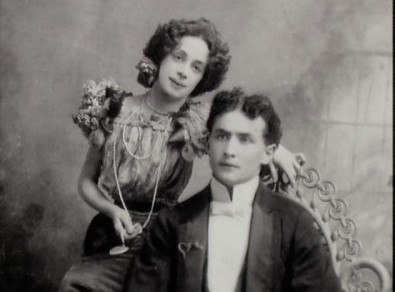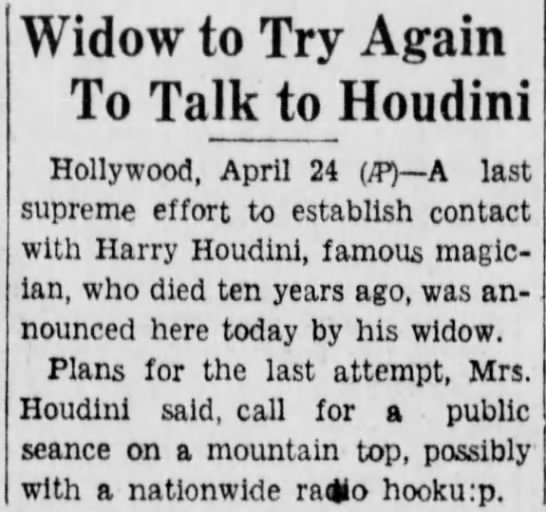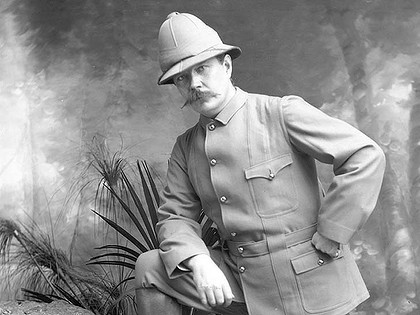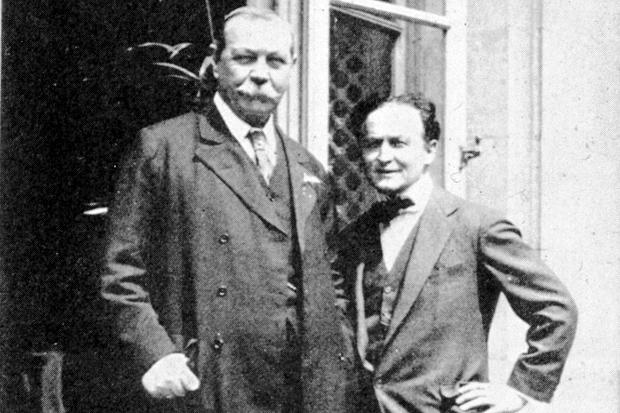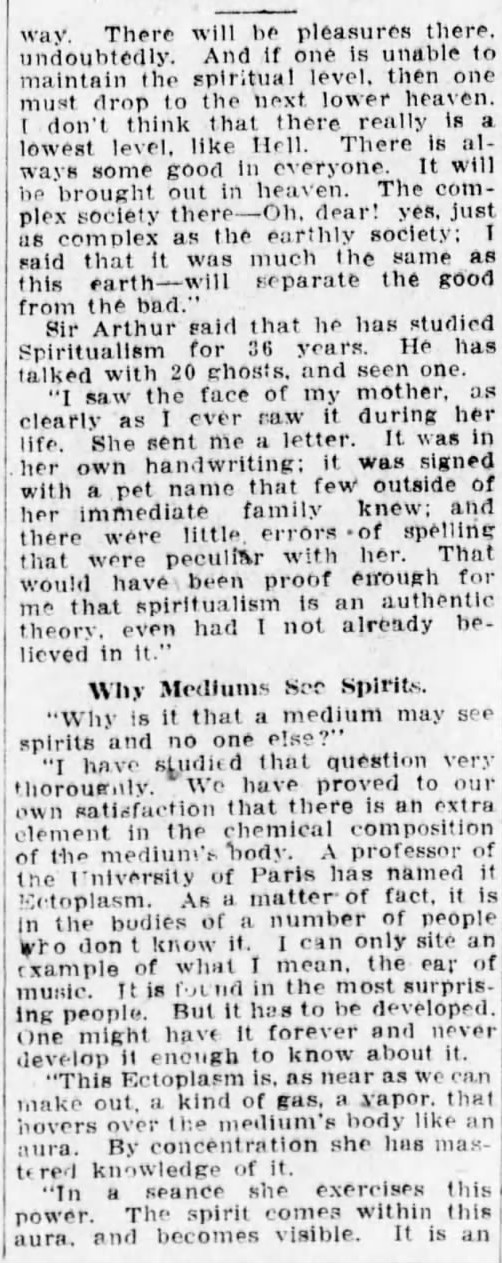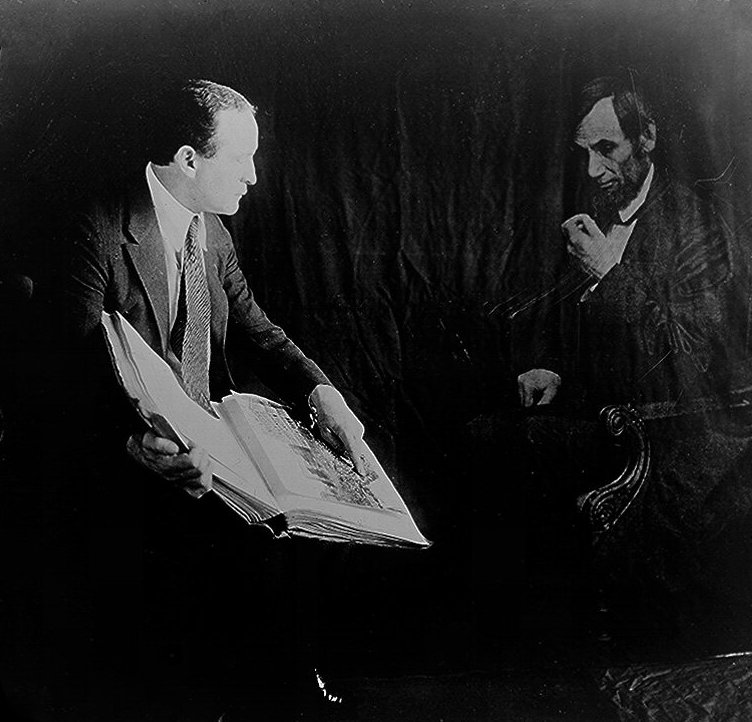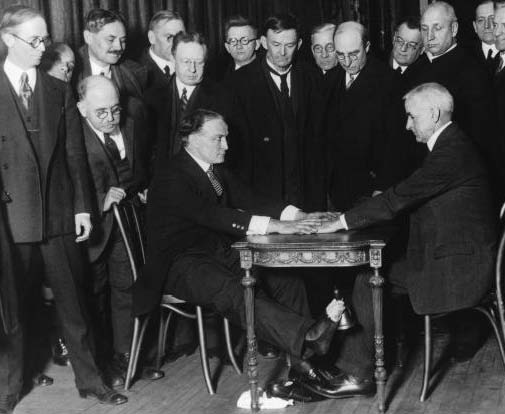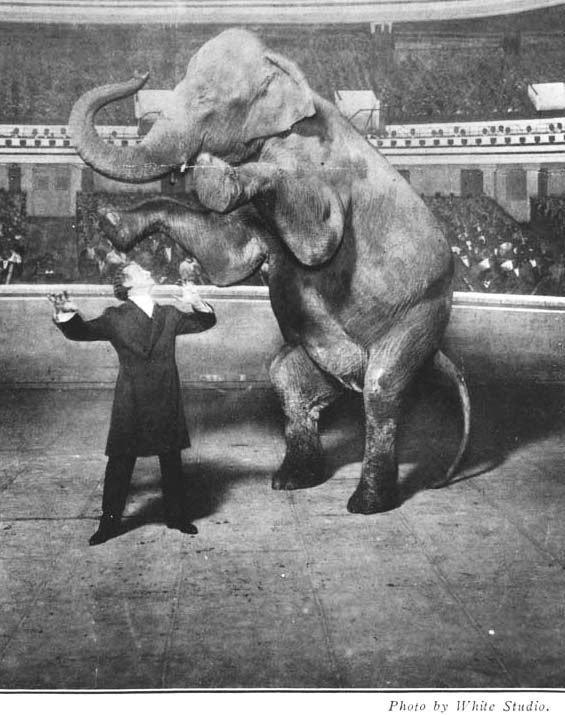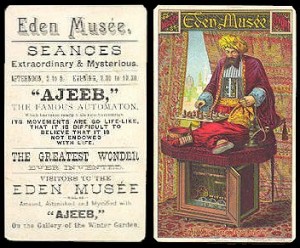This classic photo shows Harry Houdini, in the year before he died, revealing tricks used by opportunistic spiritualists to an assemblage of New York clergyman. (Notice beneath the table that the illusionist rings a bell with his toes.) The meeting took place at the Hippodrome, which seven years earlier was the site of Houdini’s famous vanishing elephant trick. What the photo doesn’t show is the magician’s young assistant, Dorothy Young, 17, who he hired that year to help with his stage act. Young lived to 103, passing away earlier this year. From her New York Times obituary:
“Born on May 3, 1907, in Otisville, N.Y., Dorothy Young was the daughter of a Methodist minister, Robert Young, and Lena Caldwell Young, a church organist. It took some convincing for her parents to allow Dorothy to sign a contract with Houdini after she won an audition in Manhattan in early 1925. She was 17.
Though she was with the Houdini tour for only a little more than a year, Miss Young gained notice. Soon after, her dancing skills were paired with those of Gilbert Kiamie, the son of a silk lingerie magnate. As Dorothy and Gilbert, they toured the country and became known for their own Latin dance, the ‘rumbalero.’ She also danced in several movies, among them the Fred Astaire musical comedy Flying Down to Rio (1933).
Miss Young’s first marriage, to Robert Perkins, ended in divorce. She married Mr. Kiamie in 1945; he died in 1992. Besides her granddaughter, she is survived by a son, Robert Jr., two other grandchildren and nine great-grandchildren. Though she took her husbands’ names in marriage, she preferred to be known professionally as Dorothy Young.
In 2003, with a considerable inheritance from Mr. Kiamie, Miss Young was able to donate more than $10 million to the creation of the Dorothy Young Center for the Arts at Drew University in Madison, N.J.
In her later years, Miss Young sometimes attended ‘séances’ organized by magicians and Houdini aficionados to celebrate and, perhaps, hear from the master. In November 2006, at a gathering in Manhattan, she sat in one of the 12 occupied chairs on the stage. The 13th chair remained empty.
Miss Young had talked with Houdini about returning from the dead, she said, while he was alive. He told me, ‘It’s humanly impossible, but I’ll be there in spirit.'”

